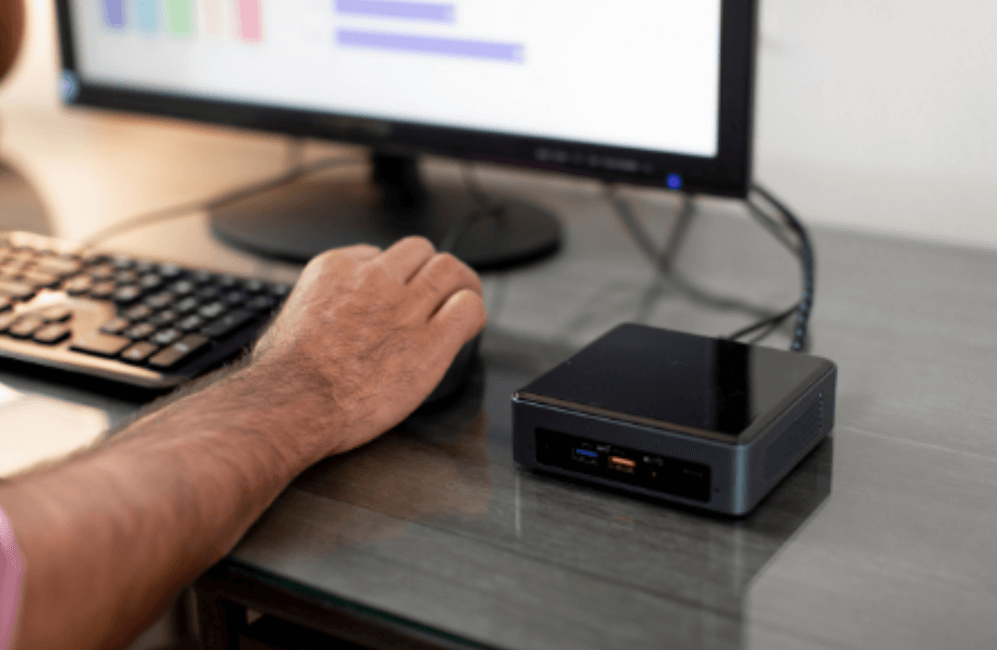Though desktop towers once towered over workspaces, today’s computers condense might into modest packages. These pocket computers potentiate possibilities beyond past processing potential, promoting perpetual progress, whichever pursuits prompt planning. Diminutive yet dynamically dexterous devices deliver convenient computing for curiosity’s crafters wherever inventiveness ignites. As enclosures decrease and efficiencies rise, small powerhouses encourage innovators to challenge limitations and explore new possibilities beyond previous boundary frames.
Among the various compact options available, one-board computers, in particular, have captured broad interest from developers of all kinds. Offering versatility, value, and customisability above the rest, these boards opened new doors for hands-on learning, fast prototyping, and unique homebrew systems. The latest iteration, the Raspberry Pi 5, takes performance and functionality to a new level, cementing its position as a premier solution for those needing mighty computing in miniature.
Why Mini Computers Are Game-Changers
Mini computers now displace traditional desktops and laptops across diverse domains, from industrial automation to advanced AI. Their pint-sized statures provide access even where bulky devices cannot reach, seamlessly embedding intelligence into any environment. Their low power requirements also make them ideal for remote or energy-conscious deployments. A significant advantage is their ability to run multiple operating systems with identical ease.
Optimisation becomes effortless when tailoring the software to specific purposes, such as developing IoT solutions or experimenting with robotics. Another key benefit is affordability. Mini computers like the Raspberry Pi 5 demand significantly fewer resources than full-sized PCs, making them a cost-effective choice for businesses and budget-minded users. Despite their smaller size and price, performance proves mightier than anticipated. They can handle intensive multitasking, media processing, and coding with equal aplomb.
See also: Atlantic Warns Rising Authoritarian Technocracy
Ideal for Innovators and Creators
Innovators, researchers, and makers seeking adaptable and affordable computing require testing and implementing ideas. Compact solutions, prototype applications, software development, and the creation of automated systems, without investing in expensive hardware. Accessibility for students and professionals makes gateway learning and experimentation possible.
These tools serve excellent teaching educators, allowing students hands-on experience in programming, electronics, and system design. Schools and universities have integrated devices into the curriculum, helping develop valuable technical skills in today’s job market.
Additionally, mini edge computing applications are often used, where processes occur closer instead of relying on centralised cloud-based systems. Enhances response, reduces, and improves the efficiency of applications requiring real-time processing.
Powering Smart Projects and IoT Applications
The Internet of Things (IoT) has seen exciting technological advancements recently. It enables smart homes, intelligent industrial systems, and automated workflows. It serves backbone applications, acting as control hubs for smart devices. Interface sensors, cameras, and wireless communication modules make for excellent development of innovative solutions in home automation, agriculture, healthcare, and beyond.
For example, we can create innovative security systems using motion sensors and cameras, automated gardening solutions for environmental monitoring, and even custom-built weather stations that collect and analyse real-time data. The possibilities are endless, and bringing ideas to life has never been easier, right, mini computer?
Raspberry Pi offers improved connectivity, increased processing, and better performance, making it ideal for building next-generation devices, whether you’re automating home designing, remote environmental monitoring, or a mini-uptask.
Versatility Beyond IoT
Beyond connecting devices, these tinier machines are utilised for various purposes. They excel at media hubs, smoothly streaming rich content while overseeing vast digital archives and retro console emulation. With robust innards and extensive programming, these compact creations can handle diverse duties without requiring bulky rigs.
Additionally, they’re popular among cybersecurity buffs who use them for penetration testing, ethical hacking, and system surveillance. Their portable and pliable designs make them ideal for professionals who need dependable digital investigation and protection examination tools.
Mini computers have also achieved traction in scientific research. Investigators often employ them for environmental data acquisition, astronomical studies, and medical imaging applications. Their ability to join with high-precision sensors and data collection gear makes them valuable in fields requiring consistent surveillance and evaluation.
The Future of Compact Computing
The demand for compact, effective, and powerful calculating solutions will increase as technologies progress. Innovations in processing power, memory, and connectivity will make these mini-machines even more capable, further broadening their uses across industries. With growing support from open-source communities and hardware makers, the environment around these devices will persist in flourishing, offering new possibilities for developers and creators.
Advances in artificial intelligence and machine learning have also unveiled new potential for minicomputers. Developers can run AI-enabled applications straight on these machines, allowing edge computing for real-time decision-making processes. This shift toward intelligent computing is anticipated to drive even more adoption of minicomputers in the coming years.
Moreover, businesses are starting to identify the value of compact calculating in reducing operational costs. Mini computers are valuable for companies that streamline processes while maintaining efficiency, from retail kiosks and point-of-sale systems to innovative inventory management solutions.
Conclusion
Compact computing has remodelled the way we approach technology and innovation. These mini machines empower users to build projects, learn new skills, and develop groundbreaking applications by offering affordability, flexibility, and adaptability. As their capacities persistently grow, they will play an even more substantial role in shaping the future of technology.







